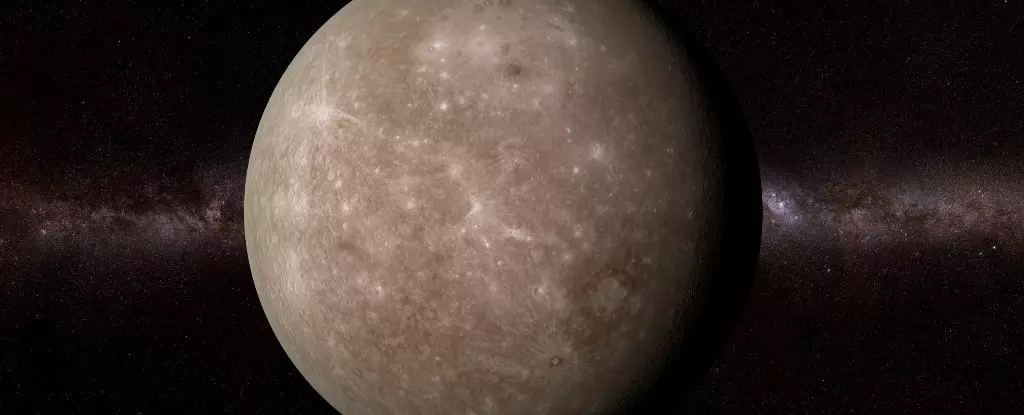Recent simulations of Mercury’s early development have proposed an intriguing concept – a 15-kilometer thick layer of solid diamond nestled between its core and mantle. This hypothetical layer, if proven true, could shed light on the formation of rocky planets like Mercury and provide insights into the planet’s enigmatic magnetic field.
Scientists from research institutions in China and Belgium were prompted by revised gravity field models of Mercury to reconsider the planet’s internal composition. By recalculating the depth of the core-mantle boundary, researchers have speculated that the conditions for the crystallization of materials within Mercury’s molten core may have been drastically different than previously assumed.
Data from MESSENGER missions suggests that the dark patches on Mercury’s surface are predominantly composed of carbon in the form of graphite. This carbon may have originated from deep within the planet and resurfaced, contributing to the planet’s crust. The presence of so much graphite hints at an abundance of carbon in Mercury’s early history, a surprising finding given the element’s volatile nature.
While diamond formation near Mercury’s core was initially dismissed due to inadequate pressures, researchers now believe that the planet’s core may have experienced enough pressure to facilitate the crystallization of diamonds. By employing thermodynamic modeling and experimental simulations, scientists have proposed a scenario where diamond crystals could have risen towards the mantle, forming a substantial layer beneath the planet’s surface.
The presence of a diamond layer within Mercury could significantly impact our understanding of the planet’s internal dynamics. The exceptional thermal conductivity of diamonds could alter predictions regarding planetary cooling and the evolution of rocky worlds. Furthermore, the movement of materials responsible for generating magnetic fields may be influenced by the presence of diamonds within the planet.
Despite its small size, Mercury possesses a magnetic field, making it one of the only rocky planets, apart from Earth, to have a magnetosphere. The longevity of Mercury’s magnetic field raises questions about the planet’s internal structure and the factors contributing to its persistence. Exploring the relationship between diamond formation, planetary dynamics, and magnetic field generation may hold the key to unraveling Mercury’s magnetic mysteries.
By reimagining Mercury’s history through the lens of diamond formation and planetary dynamics, scientists are paving the way for a deeper understanding of the Solar System’s smallest planet. Through continued research and exploration, we may unlock the secrets hidden beneath Mercury’s surface and gain valuable insights into the evolution of rocky worlds.

Leave a Reply